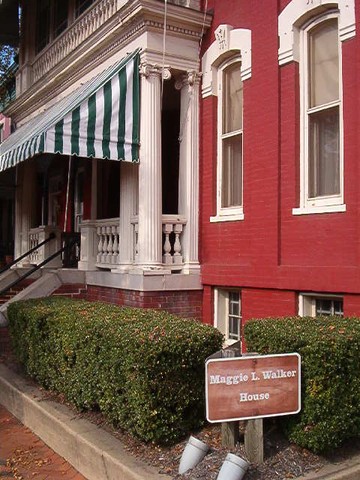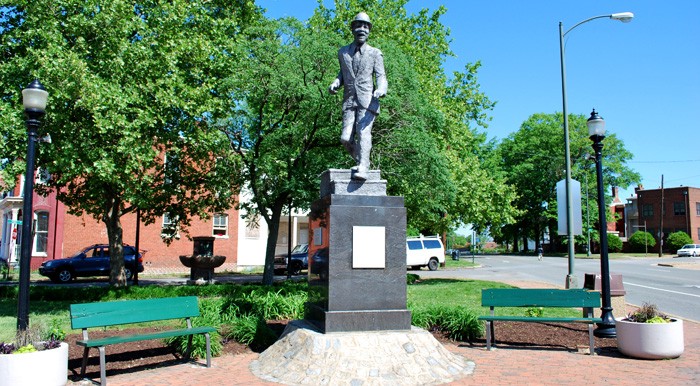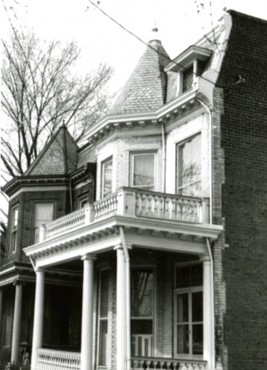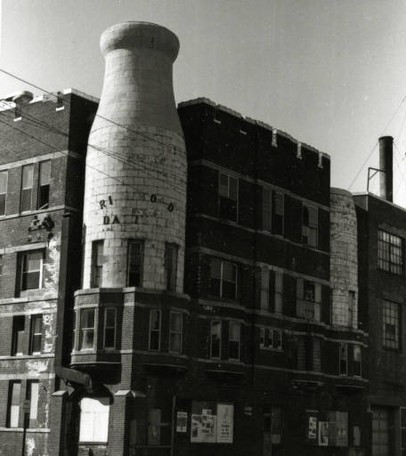Historic Jackson Ward District
Introduction
Text-to-speech Audio
Images
The Maggie L. Walker house in "Quality Row" in Jackson Ward.

A 9-foot statue of famed actor and tap dancer Bill "Bojangles" Robinson on the corner of Leigh and Adams in Jackson Ward

circa 1978. One of the many homes found in the District. Courtesy of VCU

This most unique building of the District combines Gothic architecture with giant milk bottles. Circa 1978

Leigh Street of Jackson Ward District as it looks today

Steamer Company No. 5 (fire station) building as it looks today found in the District.

Backstory and Context
Text-to-speech Audio
The Jackson Ward District has twelve historic sites located within its forty blocks including the home of civil rights activist and entrepreneur Maggie L. Walker and the larger-than-life statue of famous actor and Richmond-native Bill “Bojangles” Robinson. The 40 blocks are contained between 4th Street, Marshall Street, Smith Street, and the Richmond-Petersburg turnpike. The maintenance and revitalization efforts of this historic district is provided by the Historic Jackson Ward Association established in the 1980s and the Jackson Commons Project - their web addresses are provided beneath the article.
The Jackson Ward was officially named in 1871 by the Italian, Jewish, and German immigrants who first settled the area. The influence of the European architectural style is evident in many of the historic homes. After the Civil War ended many free African-Americans, some ex-slaves, established residence in Jackson Ward and developed what they later called “a city within a city”.
The Jackson Ward was an economy all its own. It boasted its African-American owned banks, hospital, barbers, grocers, and shops. It led many to refer to the neighborhood as “Black Wall Street” for its self-sufficient economy. Maggie L. Walker established the first female, African-American owned and operated bank in the US in Jackson Ward on so-called “Quality Row” where the most successful African-Americans lived and did business.
The neighborhood was rattled in the 1950s by a number of legislative issues. The Interstate was slated to be built through the neighborhood and as a result many long-time community members were forced to leave. Later the Interstate plans were reversed, but the community loss was irreversible. Next, federally mandated low-income housing was scheduled to be built inside Jackson Ward and it was coupled with a revitalization effort of the Richmond business district that pulled resources from the Ward. In the 1960s after the success of civil rights activists pressing for desegregation in Richmond the Ward received some economic blowback. As businesses around Richmond were forced to integrate it brought the Jackson Ward small businesses into competition with the whole city of Richmond. The result was a dramatic decrease in revenue and subsequently pulled the Ward down from its highest point. It has since become a beautiful historic district with rich culture of music and the arts.
